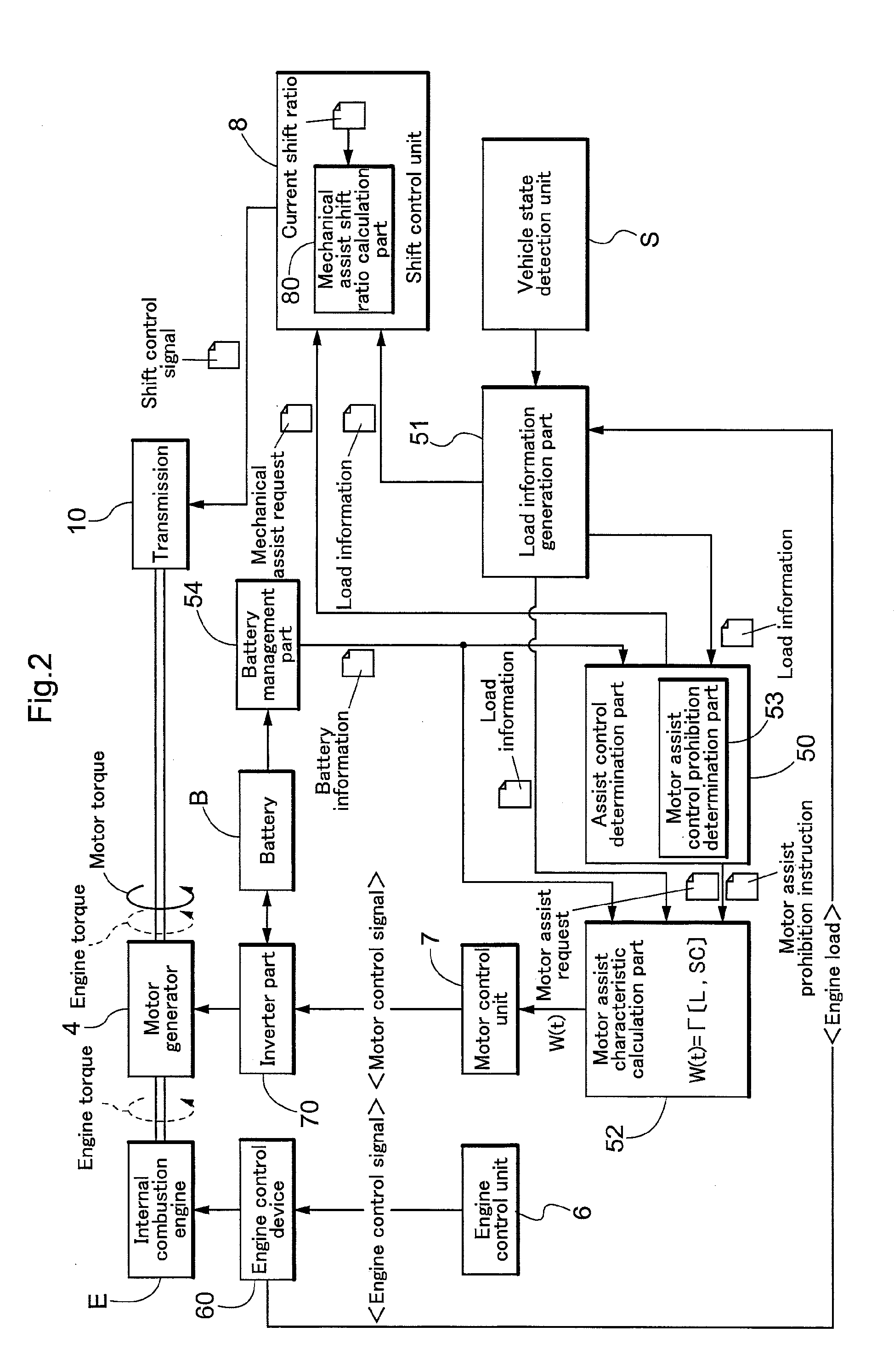Vehicle
a technology for vehicles and engines, applied in the field of vehicles, can solve the problems of engine torque approaching its maximum, vehicle loss of travel stability, engine torque loss, etc., and achieve the effects of reducing the amount of operating oil, reducing the length of time, and eliminating the shortage of operating oil
- Summary
- Abstract
- Description
- Claims
- Application Information
AI Technical Summary
Benefits of technology
Problems solved by technology
Method used
Image
Examples
first embodiment
[0104]Hereinafter, prior to describing specific embodiments of a hybrid work vehicle according to a first embodiment of the present invention, the basic configuration of a power system that is employed in the present invention will be described using FIG. 1.
[0105]This hybrid work vehicle is provided with an internal combustion engine E and a motor generator 4 as drive sources, and performs running work using a work device 9 that is mounted to the vehicle body, while travelling using a travel device 2 constituted by wheels or crawlers. Power transmission means 1 serving as a power train for transmitting power from the drive sources includes a main clutch 31 that turns transmission of power from the drive sources on and off, a PTO shaft 90 that transmits power to the work device 9, a power transmission shaft 30 that transmits power to the travel device 2, and a transmission 10. The transmission 10 is preferably constituted as a continuously variable transmission, and the shift ratio t...
second embodiment
[0150]Hereinafter, prior to describing specific embodiments of a hybrid work vehicle according to a second embodiment of the present invention, the basic configuration of a power system that is employed in the present invention will be described using FIG. 9.
[0151]This hybrid work vehicle is provided with an internal combustion engine E and a motor generator 204 as drive sources, and performs running work using a work device 209 that is mounted to the vehicle body, while travelling using a travel device 202 constituted by wheels or crawlers. Power transmission means 101 serving as a power train for transmitting power from the drive sources includes a main clutch 231 that turns transmission of power from the drive sources on and off, a PTO shaft 290 that transmits power to the work device 209, a power transmission shaft 230 that transmits power to the travel device 202, and a transmission 210. Moreover, a PTO clutch 291 that turns power transmission on and off is disposed on the PTO ...
third embodiment
[0193]Prior to specifically describing a third embodiment of the present invention, the basic flow of the basic flow of engine revolution reduction processing and motor assist processing at the time of energy saving driving according to the present invention will be described using the schematic diagram of FIG. 16.
[0194]FIG. 16 illustrates the flow of control for reducing engine revolutions and changing the shift ratio to maintain the speed of the vehicle (hereinafter, simply “vehicle speed”), triggered by a spontaneous operation input by the driver (here, operation of an engine revolution reduction button 390 serving as an energy saving button). When the driver wants to reduce engine revolutions in order to implement energy saving driving, for example, at the time of operating the work vehicle and carrying out tilling work at a constant speed, he or she presses the engine revolution reduction button 390 (hereinafter, simply “reduction button”). Note that although “−200” indicating ...
PUM
 Login to View More
Login to View More Abstract
Description
Claims
Application Information
 Login to View More
Login to View More - R&D
- Intellectual Property
- Life Sciences
- Materials
- Tech Scout
- Unparalleled Data Quality
- Higher Quality Content
- 60% Fewer Hallucinations
Browse by: Latest US Patents, China's latest patents, Technical Efficacy Thesaurus, Application Domain, Technology Topic, Popular Technical Reports.
© 2025 PatSnap. All rights reserved.Legal|Privacy policy|Modern Slavery Act Transparency Statement|Sitemap|About US| Contact US: help@patsnap.com



